Matador Network's Blog, page 784
September 16, 2020
Barbados to remove Queen as head

The island nation of Barbados is cutting its ties with the UK and the royal family. The island has just announced that it will remove Queen Elizabeth II as its head of state and officially become a republic by November 2021. The Queen has served as the island’s institutional monarch since Barbados gained independence from Britain and became a Commonwealth in 1966. Now, it wants to replace the Queen with a Barbadian head of state.
Governor-general Dame Sandra Mason read a speech written by prime minister Mia Mason, which said, “The time has come to fully leave our colonial past behind. Barbadians want a Barbadian head of state. This is the ultimate statement of confidence in who we are and what we are capable of achieving. Hence, Barbados will take the next logical step toward full sovereignty and become a republic by the time we celebrate our 55th anniversary of independence.”
The island took an initial step toward republicanism in 2003 when it replaced the London-based judicial committee with a Caribbean court of justice located in Trinidad as its final appeals court.
Barbados isn’t the only Caribbean island to take this course of action. Trinidad and Tobago, Dominica, and Guyana have also shed their imperial ties to become republics. Jamaica also reportedly has plans to become a republic. 
More like thisTravelThe best island in the Caribbean for every type of traveler
The post Barbados will become a republic and replace the Queen as its head of state appeared first on Matador Network.

Movies filmed in Wadi Rum, Jordan

Cities like Vancouver, Atlanta, and of course New York City are famous filming locations, where film crews and actors descend on the streets to make movie magic happen. But even the most dynamic city doesn’t look like a planet in a galaxy far far away… or even one in our own solar system. For dry air, heat, and endless sand, directors turn to an entirely different location: the Wadi Rum desert in Jordan.
The desert, also known as the Valley of the Moon, features a barren but beautiful landscape, dotted with granite cliffs and covered in red sand. And you’d be surprised to learn how often the scenery of the Wadi Rum desert pops up on the silver screen. It has served as a stand-in for Mars and as the backdrop for battles between Jedi and Sith lords and epic struggles against hostile aliens. The latest movie filmed in Wadi Rum is the highly anticipated Denis Villeneuve Dune reboot. Here are the most famous movies filmed in the Wadi Rum desert.
1. Dune (2020)

Photo: Warner Bros. Pictures
This sci-fi classic, based on the book by Frank Herbert, takes place far from Earth on the desert, sand-worm infested planet of Arrakis. The complex story centers on the house of Atreides, the royal family sent there to harvest the planet’s valuable spice. But when Duke Leto Atreides (Oscar Isaac) is violently overthrown, it’s up to his son Paul (Timothee Chalamet) to rally the planet’s native Fremen to help him seize back the planet and take control of the spice.
“It was really surreal,” Chalamet told Vanity Fair of filming in Wadi Rum. “There are these Goliath landscapes, which you may imagine existing on planets in our universe, but not on Earth.”
Back in April, Josh Brolin, who also stars in the film, posted a video to Twitter from Wadi Rum back in April of 2019, in which he gives fans a sneak peek at the film’s backdrop.
“This is what we’re dealing with,” he says in the video. “A lot of ancient space…beautiful, peaceful, quiet, ominous.”
2. Lawrence of Arabia (1962)

Photo: Columbia Pictures
Wadi Rum feels so much like another planet that its mostly used as the backdrop to sci-fi movies, but perhaps its most iconic appearance takes place right here on Earth: Lawrence of Arabia, considered one of best films ever made, winner of 10 Oscars, and starring the legendary Peter O’Toole, was filmed at Wadi Rum. The film follows T. E. Lawrence, a British lieutenant who rebels against the orders of superiors and embarks on an epic journey across the desert to add what were then called Arab tribes against invading Turkish forces, successfully pulling off what became known as the Arab Revolt. The film became such a hit that it actually boosted tourism to Jordan. The real-life Lawrence spent extensive time in Jordan, and in particular in Wadi Rum, which he called “vast, echoing, and God-like.”
3. The Martian (2015)

Photo: 20th Century Fox
In this quiet but compelling film, Matt Damon stars as Mark Watney, who accidentally becomes separated from his team and is consequently abandoned on Mars. Watney is determined to survive on the barren landscape of Mars — actually the Wadi Rum desert — which is hostile to farming. Though there are some scenes back on Earth of his guilt-stricken astronaut pals trying to find a way to save him, most of the movie takes place in the desolate, lonely, eerie quiet of the empty desert. There’s even an official tour inspired by the film that visitors to Wadi Rum can take if they want to experience the “sense of isolation and the enormity of the landscape both in Wadi Rum and on Mars.”
4. Rogue One: A Star Wars Story (2016) and Star Wars: Rise of Skywalker (2019)

Photo: Walt Disney Studios
As you can already tell, Wadi Rum has served as a stand-in for strange and foreboding alien planets. There are plenty of those in the Star Wars universe, which is perhaps why filmmakers have turned to the desert to film two of the franchises biggest hits, Rogue One: A Star Wars Story and Star Wars: Rise of Skywalker. In Rise of Skywalker, Wadi Rum is the location of Pasaana, a desert planet, but in Rogue One it’s transformed into Jedha, a small, ice-cold moon.
5. Prometheus (2012)

Photo: 20th Century Fox
This prequel to Alien received mixed reviews, but Wadi Rum served as the perfect stand-in for the barren, chilling landscape of planet LV-223. Ridley Scott, director of The Martian, returned to Jordan to film the surface of the planet where a group of scientists hopes to meet “humanity’s forerunners,” known as the Engineers (instead they find terrifying and bloodthirsty aliens, of course). One interesting fact about the film that highlights another connection to Wadi Rum is that one member of the crew, an AI named David, repeatedly watches Lawrence of Arabia while his human counterparts are in stasis. 
More like thisTravelThe best things to do in Jordan beyond Petra
The post ‘Dune’ and 5 more epic movies filmed in Jordan’s Wadi Rum desert appeared first on Matador Network.

The best 4x4 vans to rent for winter

If you really dig into it, #vanlife can be challenging — in those parts of the country that experience all four seasons. Waking up to an open door overlooking a towering peak is one thing in the summer, but it’s a whole different story when there’s a foot of snow on the ground. A campervan worthy of winter exploration needs to be more than just cozy and warm, and all night long at that. It must also actually be able to traverse the highway in the first place. That’s where these 4×4 camper vans come in, and you can rent them in plenty of mountain states.
1. 4WD Ford Econoline
Available from Roamerica in Portland, Oregon

Photo: Roamerica
The Ford Econoline practically invented #vanlife back when garage rock bands first decided they were at a level that required incessant touring. Back then, traveling around in a van was anything but glorious. Most folks would probably have described it as foul, hectic, and not for the faint of heart. This van is the polar opposite of those early days. Bench seats are swapped for two comfortable beds and five belted seats, raised ceiling, and even lifted suspension to make traversing winter roads easier.
Because of the four-wheel drive, you’ll easily make it into the parking lot of your favorite ski resort and actually be able to make it out again if it snows all day. Renting from Roamerica offers the bonus of a significantly cheaper rate in winter. This van goes for $228 per night from September through May.
2. 2015 Ram Promaster Sprinter Van
Available from Outdoorsy in Silverthrone, Colorado

Photo: Outdoorsy
In the #vanlife world, one word is synonymous with luxurious epicness: Sprinter. No matter the model, a Sprinter van offers top-tier performance and technology in a van that’s sure to be both hardy and comfortable. This Ram Promaster is both of those things, plus all-terrain tires for ripping through the Rocky Mountain highways to wherever the powder might be.
For $170 per night, you’ll have everything you need to get to the slopes and remain toasty from aprés hour through the night. The owner even added a “tall person extension” to the bed setup, along with solar power, and an inverter and the CD player ensures that those stuck in the ’90s can jam out without any pesky algorithms picking up on that “Blink-182 on repeat” habit.
3. Ram ProMaster 1500 high roof
Available from AlaskaVans in Anchorage, Alaska

Photo: AlaskaVans/Facebook
Winter travel in Alaska requires a badass vehicle. AlaskaVans rents out fully equipped campers in Anchorage for ski season in February and March, and for spring as well, which is at the least on par with winter in most other places. Each Ram ProMaster1500 comes with cooking and camping gear, an awning, and the price is equally appealing at just $135 per day during the non-peak season.
Because Alaska is massive and remote, all vans come with GPS navigation and allow for up to 350 miles of travel per day, where many companies only allow 150 to 200 miles per day.
4. 4×4 Rooftop Jeep Camper Rental with winter bedding upgrade
Available from Escape Campervans in Denver, Salt Lake City, and Las Vegas

Photo: Escape CamperVans
Ok, so it’s not technically a van, but there’s a reason why the term “Jeeping” exists — and it’s not because of the movie Clueless. Jeep Wranglers are among the hardiest of off-road rippers, and the advantage it has over larger vehicles in the snow is that its weight is more centered and therefore less likely to tip on slippery roads.
This Jeep specifically is retrofitted perfectly for cold-weather outdoor adventures, right down to the rooftop camper that keeps you elevated from the cold ground below. Opt for the “winter bedding upgrade” and stay warm while staying close to the lifts or trailhead. The Jeeps are designed for off-road driving, even in winter, and can include an optional bike rack hitch should you be covering extra ground.
5. 2019 4×4 Mercedes Sprinter Vans
Available from Cascade Adventure Vans in Seattle, Washington

Photo: Cascade Adventure Vans
Washington has the most vibrant parking lot camping scene of anywhere in American ski-country. Cascade Adventure Vans knows this and has designed a fleet of Mercedes Sprinter vans to get you there and keep you comfortable during the cold nights. The vans come with two Moab elevator beds, bench seating, a roof rack and side ladder, and insulated curtains (yes, that’s a thing).
These vans also have auxiliary power to keep your laptop and phone charged even when the van’s parked, and plenty of storage for boards, skis, and other tools of the winter sports trade. And your dog can come along for the ride, all for $230 night.
6. 2019 4×4 Mercedes Sprinter Vans (Montana style)
Available from Explore Campervans in Bozeman, Montana

Photo: Explore
The Sprinter goodness spreads further east to Bozeman, where Explore Rentals offers a fleet of 4×4 Mercedes Sprinter Vans in Bozeman. These will get you to Big Sky, Lost Trail Ski Area, and the limited sections of Glacier National Park or even further afield across the mountain west in style without the need to fly into a major city first.
The majority of its vans are high-roofed and all have room underneath the seats for ski and gear storage. Tires are dedicated snow, and you’ll stay warm next to the 24,000-BTU fuel-powered heater. Many have room for up to 12 people to sit in as well, meaning your whole crew can stop by for an aprés-ski toast.
7. The “Black Bear” 4×4 Mercedes Benz Sprinter
Available from Vermont Adventure Vans in South Burlington, Vermont

Photo: Outdoorsy
You likely grasp the theme here — Sprinter vans rock, and Mercedes builds them top-of-the-line. For your Northeast winter road trip, Vermont Adventure Vans has you covered with a 4×4 Sprinter equipped with a full kitchen setup and room to bring a small family. The van comes with a ski and bike rack as well as an outdoor shower, although that might be ambitious in the winter.
TV is included, and additional outfitting options are available if you need specific gear or gadgets for the road. The inside of the Black Bear looks kind of like a car audio store — sleek, modern, and ready to rock your face off, should that be necessary. Rates start at $250 per night. 
More like thisFamily TravelThe Hunt for Beyondland: The Great American Family Road Trip
The post The best all-terrain vans for your winter #vanlife escape appeared first on Matador Network.

Best and worst US cities for driving

Now that the pandemic has seriously limited our use of public transport, we are driving more than ever, and everyone is in competition for the “worst driver” designation. But our driving habits don’t always boil down to our personal ability or temperament — it’s also about the city itself, the quality of its roads, its traffic congestion, etc. To figure out which cities are the best and worst to drive in, WalletHub compared the 100 largest cities in the US using a set of 31 criteria, including average gas prices, hours spent in traffic, the number of auto repair shops, cost of vehicle maintenance, and more.
Source: WalletHub
According to the findings, Lincoln, Nebraska, is the best city in the country for driving, scoring highly on safety, traffic and infrastructure, cost of ownership and maintenance, and access to vehicle maintenance. Following closely behind are Raleigh, NC; Corpus Christi, CT; Greensboro, NC; Boise, ID; and Plano, TX.
Coming in last — and taking home the title of “worst driving city in the US in 2020” — is Oakland, California, which scored poorly across all areas. It’s joined at the bottom of the list by Philadelphia, PA; San Francisco, CA; Detroit, MI; New York, NY; Los Angeles, CA; and Chicago, IL.
The full chart with additional data is available online. 
More like thisRoad TripsHow to get an International Driving Permit
The post The best and worst US cities for driving in 2020 appeared first on Matador Network.

Indigenous seed savers mission

Taylor Keen, the founder of Sacred Seed, which preserves and plants Cherokee and Omaha Nation crops, remembers exactly how corn came back into his life: It all started with a phone call, nearly 15 years ago, from his mentor Dr. Deward Walker.
“He called me up and said, ‘Young man, what are you doing to protect your corn?’” Keen tells me.
Keen, a member of both the Omaha tribe and the Cherokee Nation, hadn’t thought about the status of Indigenous crops, but over the course of their conversation, Walker, who is a professor of anthropology at the University of Colorado Boulder, told Keen that corporations like Monsanto were “displacing the Indigenous heirloom seeds with their seeds,” Keen recalls. These revelations alarmed Keen.
A few years later, while at a Cherokee National Council committee meeting in Oklahoma, Keen once again faced the question of how to preserve Indigenous seeds. Keen recalls asking the council if they were worried that the monopoly on seeds by companies like Monsanto might be suppressing the diversity of plants. Then, another member of the council, an ethnobotanist in charge of the tribe’s agribusiness, spoke.
“He said what matters is that we as Cherokees develop a relationship with our own seeds again, and develop and come back into our own agricultural life ways,” Keen says, adding that those words were “life-changing.” In 2014, with a “jumpstart” from the Cherokee Nation’s seed bank, Keen founded Sacred Seed — which he defines as “not an endeavor, and not even really an organization … but a movement and a Sacred Ceremony” — and returned to Nebraska.
What is seed keeping

Photo: Kathy Matsunami/Shutterstock
Sacred Seed is just one organization among a growing movement to preserve the seeds of the three sisters of Indigenous agriculture — squash, corn, and beans — as well sunflower, sometimes known as the fourth sister. Seed saving, also known as seed keeping, stems from a pre-contact Indigenous agricultural practice. According to the First Nations Development Institute, tribes saved seeds from the current harvest to plant in subsequent harvests and use for ceremonial purposes. The heirloom seeds promote genetic diversity, and the crops tend to be colorful, diverse, well-suited to organic and sustainable agriculture, and better at withstanding inclement weather and pests.
“The seed saving movement is part of the resurrection of an ancient tradition,” says Keen.
Collecting, storing, sharing, and planting these seeds is just one element of a more complex mission to restore Indigenous foodways that were lost during genocide and forced relocation. For instance, the Alliance of Native Seed Keepers aims to encourage food sovereignty by teaching Indigenous people to grow their own food sustainably — meaning that their agriculture won’t be reliant on government aid or corporate charity, and will hopefully outlast industrial farming practices that exacerbate climate change and destroy the environment.
The group also hopes that seed keeping might help ease food apartheid on and around reservations where there are no grocery stores for miles and often no public transportation to get to the grocery stores that are in the region.
Many tribal communities are forced to rely on fast food and gas station food, which has led to higher rates of heart disease and diabetes among the Indigenous people of North America. Reuniting Indigenous communities with their ancestral seeds — and teaching them how to cultivate the resulting plants — could help reverse some of the disastrous health effects from generations of reliance on commodity food and rations, the activist Rowen White, a member of the Mohawk Nation and founder of the seed conservation collective Sierra Seeds, told Civil Eats in 2017.
Other programs, like the Indigenous Seed Keepers Network (an arm of the Native American Food Sovereignty Alliance) emphasize that these crops are a “precious collective inheritance” that Indigenous communities have a responsibility to restore and “protect … from patenting and bio-piracy.”
These concrete goals are framed by a central belief at the heart of this movement, best encapsulated by the mission statement of Braiding the Sacred, an organization that hosts gatherings of Indigenous corn growers to plant seeds and built community: “As the Corn and our other plant and animal relations begin to flourish again, so too will the Nations who carry out these sacred responsibilities.”
Why corn matters

Photo: Taylor Keen
Keen says that corn is at the “center of our indigenous mythology,” in particular their creation stories. In the Cherokee tradition, for instance, Selu is the First Woman, Corn Mother, who taught her sons to plant and farm corn before her death, thus ensuring the survival of the Cherokee people. To restore Indigenous corn to the soil is not just a source of physical nourishment but also of spiritual and emotional nourishment, too, and a way to preserve Indigenous mythology and storytelling.
Keen founded Sacred Seed while still living in Oklahoma, where he received Trail of Tears beans from the Cherokee Nation seed program. Once he arrived in Nebraska, he visited the Common Soil Seed Library at the Omaha Public Library, where he found butter squash seeds. But his main focus is on corn.
“My clan, the Ohama tribe, is the keeper of the sacred red corn,” Keen says. “So one of my goals was to be able to bring back some of those strains.”
He did eventually track down an old Omaha strain of red corn, and he was gifted an ear of Omaha Rainbow Flint Corn that he used to grow a hybrid variety of corn he calls Ruby Flint. But perhaps the most surprising and inspiring discovery of his new foray into farming was the 30 kernels of white flour corn he received from the Cherokee Nation seed program, along with the beans.
“That first year that I planted those white flour varieties, they came in all colors,” Keen says. “I was just blown away. There were yellow speckles, and red speckles, and white with a little bit of color, and there was red and black and orange and purple [corn]. These old strains from the Southeast began to adapt to my yard now six years ago, and they were just all these beautiful, different colors.”

Photo: Taylor Keen
Keen became steward to an extensive farm in the backyard of his home in Omaha, where he taught at Creighton University’s Heider School of Business. The corn grew 10 to 15 feet high, towering over the powerlines and the sunflowers peppered throughout the garden. He spoke with his elders of the Ohama nation, including his own mother and grandmother, who are among the few people who still speak their Indigenous language, and gathered their knowledge on how to dry, roast, preserve, and harvest the seeds and resulting crops. He felt himself returning to the ancient traditions of his ancestors.
“To me, that [seeds] sustained us, the Cherokee people, across the Trail of Tears, was a very powerful notion,” he says.
The future of Sacred Seed
Keen has since moved to Council Bluffs, Iowa. He left his farm behind but plans to begin planting a new one in the spring. Sacred Seed is still thriving in Omaha even though Keen has left Nebraska: Every year back in Omaha, he held an “Indigenous Thanksgiving,” during which he hired a team to prepare a mix of traditional Indigenous dishes like bison stew, three sisters stew, and blue corn mush, as well as modern dishes that use Indigenous ingredients like elk ribs, huitlacoche-flavored cornbread, Arikara watermelon sorbet, and smoked fish cakes. The Sacred Seed Pop Up, a garden and gathering space in Downtown Omaha, recently partnered with No Empty Pots to donate produce to people living in food deserts.
For now, Keen doesn’t plan to apply for any grants, which are available to projects like his, not only because he says that Sacred Seed requires more labor than money but also because he decided from the start to “not defile the sacred seeds by introducing it into money.” He’s focused instead on the healing properties of planting reclaimed seeds and communing with the earth as his ancestors did.
“Intergenerational trauma is a real thing,” Keen says. “But there is a safeguard to help us during these times: getting one’s hands in the soil, getting used to the cycles of the month and the seasons, and of the cycles of the moon. And paying attention to when to plant and when to water. It’s healing. It healed me.”
Ultimately, Keen hopes that Sacred Seed can “protect and preserve the genetic diversity of original seeds while promoting local, traditional, and sustainable agriculture to offer healthy and low-impact food.” It sounds lofty, but it’s also simple and profound, and it harkens back to how his ancestors survived the Trail of Tears, carrying seeds sewn into their clothes.
“Eventually, I want to see all Cherokees and all Omaha [people] keeping their own seeds,” Keen says, “and sharing them with others, so that whatever adversity we face, we learn to survive it.” 
More like thisFood + DrinkThe ‘Three Sisters’ of Indigenous food nearly disappeared. Chefs are fighting to bring them back.
The post How Indigenous seed savers safeguard agricultural and spiritual tradition appeared first on Matador Network.

Gordon Ramsey travel show jobs

If you’re presented with an opportunity to travel the world for free and eat delicious food, you probably won’t be asking too many questions before signing up. Well, Gordon Ramsay is indeed looking for people between the ages of 16 and 21 to do just that as part of his new TV series.
Details are scarce on the application website, but the call reads, “Studio Ramsay is now casting 16-21 year olds for an exciting new travel adventure series for a major network. Do you dream of traveling to an international destination? Do you have a desire to explore the world? Do you have a passion for culture, food and adventure? If you have a strong curiosity to experience and discover new cultures, apply today for your greatest travel adventure!”
While the specifics of the show haven’t yet been revealed, Studio Ramsay is the same production company responsible for The F Word and 24 Hours to Hell & Back.
On Twitter, it’s Gordon Ramsay himself who invites you to apply for this dream job.
We're excited to announce an amazing opportunity for 16-21 year olds who are ready to go on an adventure to an international destination. Desire to explore the world combined with a passion for adventure and food is a must! For more info visit here: https://t.co/xLunHvSo6z pic.twitter.com/kQPoktXix2
— Studio Ramsay (@Studio_Ramsay) August 14, 2020
So if you meet the age requirements and are eager to eat your way around the world, this is probably an opportunity you won’t want to pass up. The deadline to apply is October 3, 2020. 
More like thisFood + Drink8 books that will take your taste buds on a global journey
The post Gordon Ramsay is looking for young travelers for his new show appeared first on Matador Network.

Asbestos, Quebec, name change

Unsurprisingly, the Canadian town of Asbestos is wanting to change its name. The Quebec town, curiously named after the deadly substance that had been mined there for many years, is now committing to changing its name. Although some residents felt the name hearkened back to the town’s past, and evoked its unique history, others were understandably less enthused.
The new name will be chosen from a list of four finalists, what was narrowed down from 1,000 suggestions. The name options include Phénix, after the bird reborn from its own ashes; Apalone, after a turtle species; Trois-Lacs, after a neighborhood in the town; and Jeffrey, the last name of the first person to mine asbestos in the town, William Henry Jeffrey.
All things considered, Jeffrey might be the best compromise between the traditionalists and those wanting change. It’s not exactly leaving behind the relationship with asbestos, but it’s also not showing those associations right in your face. In any other circumstance, naming your town Jeffrey wouldn’t be an enticing proposition, but compared to Asbestos the name sounds absolutely majestic.
There are 7,000 residents of the town, and those over the age of 14 are allowed to vote on the new name between October 14 and 18. 
More like thisLanguagesThe US town names that translate hilariously into other languages
The post appeared first on Matador Network.

‘Shrunken heads’ removed from museum

After 80 years on display, Oxford’s Pitt Rivers Museum has removed several tsantsa, or “shrunken heads,” from display. Although the tsansa have been very popular artifacts with visitors, when the museum reopens on September 22, they will be moved and will not be available for public viewing until further notice.

Photo: Hugh Warwick + Pitt Rivers Museum, University of Oxford
The tsantsas were made by the Shuar and Achuar people of Ecuador and South America. The heads of dead male enemies were taken and preserved so the Shuar and Achuar could acquire the powers living within the souls of their fallen foes.
Between 1884 and 1936 the museum acquired a total of 12 tsantsas — seven human heads (only three of which are deemed authentic while the rest are thought to be forgeries made from bodies taken from morgues) and the rest belonging to sloths or monkeys.
An ethical examination has been made of the museum’s entire inventory, resulting in the heads being removed. According to the museum’s audience research, visitors often viewed the heads as an indication of the “savagery” and “primitiveness” of other cultures, reinforcing serious racist stereotypes.
In a press release, the museum explains its choice by saying, “although popular with some, visitors mostly understood the Museum’s displays of human remains as a testament to other cultures being “savage,” “primitive” or “gruesome,” revealing that the displays did not align with the Museum’s core values of enabling our visitors to reach deeper understanding of humanities’ many ways of being, knowing and coping but reiterated racist stereotypes.”
Shuar delegates were consulted before the artifacts were removed to ask how they wanted their cultures to be represented within the museum. Shuar Indigenous leaders, Miguel Puwáinchir and Felipe Tsenkush, said: “We don’t want to be thought of as dead people to be exhibited in a museum, described in a book, or recorded on film… Our ancestors handed over these sacred objects without fully realizing the implications.”
There has not been any request for repatriation for the tsantsas previously displayed in the museum.
The removal of the tsantsas from display at the Pitt Rivers Museum is part of the institution’s decolonization process. Other human remains have been taken down before the reopening of the museum. 
More like thisMuseumsThe ultimate rainy day tour of London’s museums
The post Oxford museum removes controversial ‘shrunken heads’ from display appeared first on Matador Network.

September 15, 2020
What are traditional Inuit tattoos
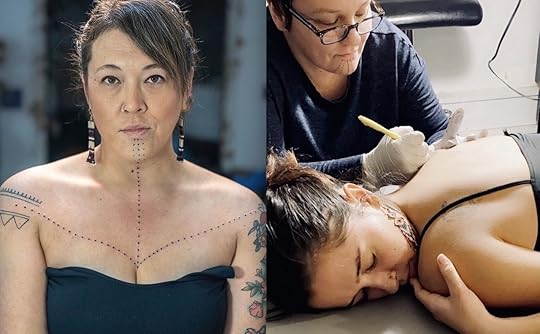
Editor’s note: The term “Inuit” is broadly used to refer to Native peoples from the circumpolar Arctic in Alaska, Canada, and Greenland. Though “Iñupiaq” and “Yupik” are the comparable terms for Native Alaskans, the use of “Inuit tattoo” in this article reflects the language commonly used by Native tattoo artists throughout the Arctic region.
Holly Mititquq Nordlum grew up admiring her great-grandmother’s tattoos. Though the women in her Iñupiaq village in Arctic Alaska had not been tattooed for generations, photographs of the matriarch hung in the homes of all Nordlum’s relatives, her traditional ink on full display.
“I was always curious about our tattoos,” says Nordlum, recalling the few times she saw them in person as a girl. The daughter of a pilot, Nordlum remembers being encouraged to ask questions when her father flew in Native Alaskan elders from Wainwright or Port Hope, awed by the markings the women wore on their faces and bodies. “That must have stuck with me,” she says.
Now, Nordlum sports the tattoos her great-grandmother once did. For the past five years, she’s worked as a traditional tattoo artist in Anchorage, joining a league of Native women across the circumpolar Arctic working to revive the practice and redefine what it means today.
Native Arctic women tattooed one another for millennia before Western colonizers abolished the custom. These women earned their ink: Girls got their first tattoos when they started menstruating, often in the form of lines running down the chin. Additional stripes were drawn when a woman mastered a new skill or reached a milestone, like learning to sew a seal-skin parka or giving birth.
“Face tattoos were celebrations of a woman’s life,” says Nordlum, and advertisements of their womanhood. Less visible tattoos might have served other purposes.
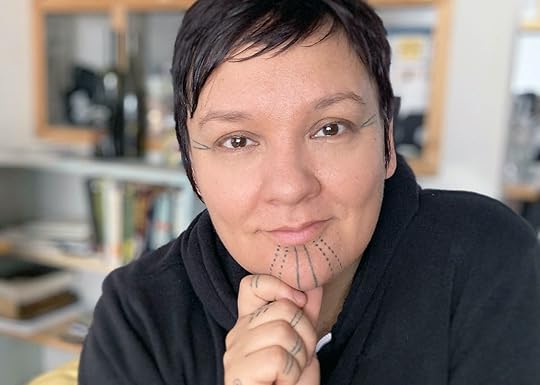
Photo: www.naniqdesign.com
Expectant mothers often tattooed their thighs to give their newborns something beautiful to look at as they entered the world. Other ink was medicinal: Many women suffering from inflammation caused by breastfeeding tattooed their chests. Last year, Nordlum had a fellow Iñupiaq tattoo artist in Anchorage work on her hands in hopes of relieving the pain she’d developed through her own tattooing practice and work as a graphic designer.
“Tattoos create wounds your body has to send white blood cells to heal,” says Nordlum, explaining the practice’s medicinal value. “So if you have an infection, and you do it right, and you don’t overdo it, they can actually be healing.”
Over the years, academics have recorded various explanations for Inuit tattoos. In the mid-20th century, French ethnographer Bernard Saladin d’Anglure traveled to Nunavut in Arctic Canada to interview Atuat Ittukusuk, the last tattooed woman in her Igloolik village. Per d’Anglure, Ittukusuk explained that face tattoos were done to please the sun spirit while hand tattoos were said to please the sea spirit. Elsewhere in Nunavut, in Gjoa Haven, the Nattilik Inuit have been cited as believing that only tattooed women would be allowed into the afterlife in the sky. Those without tattoos would be condemned to a bleaker afterlife underground known as Nuqurmiut.
Nordlum cautions against accepting these explanations without a grain of salt: Early research was mediated by non-Inuktitut speakers, whose own languages may have been unfit to express Native beliefs and whose own cultures may have biased their translations.
Translated into English, for example, the tattoos lose much of their nuance. “We’ve got a pretty good handle on how our culture treated them, but how I verbalize that in English might not do it justice. It’s really such a simple language,” says Nordlum, who hesitates to simplify the practice into a convenient, “coffee-line answer” for anybody’s benefit.
Nonetheless, even for those who don’t speak the region’s Indigenous languages and whose grasp on the precise meanings behind Inuit ink might be tenuous, the significance of the practice is evident, as much today as ever.
The pain of being tattooed has always been a rite of passage. There are two traditional methods: stitching, which entails sewing the skin, and hand-poking. Though cotton thread and Western needles have replaced materials like sinew, bone, and porcupine quills, some degree of pain is inevitable, particularly when it comes to tender areas like the face. For many modern Native women, much of that hurt is also emotional.
View this post on InstagramA post shared by Inuit Art Foundation (@inuitartfoundation) on Jul 10, 2020 at 1:47pm PDT
In the 19th and 20th centuries, European missionaries built boarding schools on Native land across the circumpolar Arctic. Native children were forced to attend and kept from their culture. Both Nordlum’s mother and grandmother, neither of whom have tattoos, were raised at these schools. To this day, Nordlum’s mother speaks no Iñupiaq.
To be tattooed now is to face a history of cultural erasure. It can be challenging, powerful, and cathartic. In many cases, it’s also an intimate moment shared between Native women.
Nordlum’s studio is attached to her house, which is usually full of women: her mother, neighbors, friends, elders, other tattoo artists. Often, the girls who come to get tattooed also bring a best friend, creating a safe, sympathetic space to discuss the experiences “all Native Alaskan women have been through.” Abuse and addiction are common themes, Nordlum notes.
Other times, Nordlum is alone with the women she tattoos, “and then there’s tears and joy and understanding. Just having that understanding, and listening, and being able to cry together is such a powerful, healing thing,” she says.
As a new generation of women is learning the art of Inuit tattooing, a closeness is being fostered among the women working to revive the practice, as well. Nordlum apprenticed under Maya Sialuk Jacobsen, a tattoo artist from Greenland whom Nordlum got funding to bring to Alaska and who gave Nordlum her first tattoos. Sarah Ayaqi Whalen-Lunn, whom Nordlum works with almost daily in Anchorage, also trained under Jacobsen. Across the Arctic, in Canada, Hovak Johnston has been instrumental in casting new light on the practice through her Inuit Tattoo Revitalization Project, which inspired many of today’s tattooers and tattooees.
“We all know each other,” says Nordlum. “Even around the world we all know each other.”
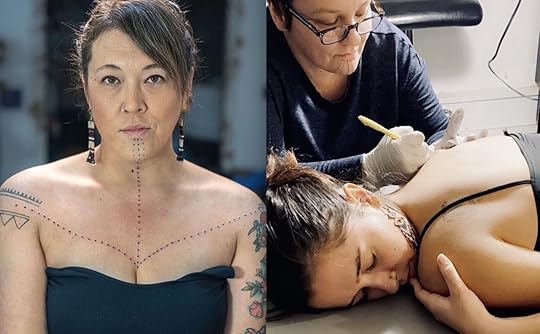
Photo: Michael Conti Photography + www.naniqdesign.com
Though Native Arctic men were not traditionally inked, Nordlum, who has two sons, also sees the value in opening up the practice to Native boys. “If you look at our statistics — incarceration, alcoholism, crime — it’s all our men here in Alaska. Per capita, it’s three times any other race.”
Deciding to train her oldest son, now 20, was a difficult decision. It started by chance: Nordlum had asked him to fill in during a presentation at the Anchorage Museum after double-booking her time with a presentation in Toronto. Recognizing his enthusiasm for the practice, and appreciating his unique perspective, Nordlum has been organizing training sessions ever since.
At the end of the day, “Our men need help,” she says. “If tattooing can help heal, and that gets them in the chair so they’ll talk about their issues, I’m more concerned about helping our people than I am about sticking close to the tradition.”
There are limits to widening the practice, however. The resurgence of Inuit ink within Native communities has also generated interest among Western enthusiasts. Some have even requested the tattoos. This has been controversial: A number of Native tattoo artists, and tattooed women, have spoken out against the appropriation of their culture while others, like Nordlum, have chosen to leave room for conversation.
“I guess it would matter which ones,” she says on whether or not she would tattoo a non-Native person. “On the face? I would be very offended because the face markings are so prevalent … I know a few non-Native people here in Alaska who’ve done it, and it doesn’t recognize either culture because they don’t even know the meaning. They just like the way that it looks. And they’re not of that marginalized society. In fact, they’re the reason … So really it’s just more stealing of something that’s 10,000 years old.”
Before women like Nordlum, Jacobsen, Lunn, and Johnson began working to revive the practice, Inuitt tattoos were on the verge of dying out with the last tattooed elders. Now, these modern traditional tattoo artists are not only reviving but also evolving the practice. While each has her own perspective on how the ink should be treated in the 21st century, it’s because of their collective effort that Native girls, and boys, can once again grow up admiring the heritage that was taken from them.
And that alone is worth celebrating with a new generation of tattoos. 
More like thisFashionGreenland’s national costume is a work of art
The post How Native Arctic women are taking back the art of Inuit tattoos appeared first on Matador Network.

Best public lands in the eastern US
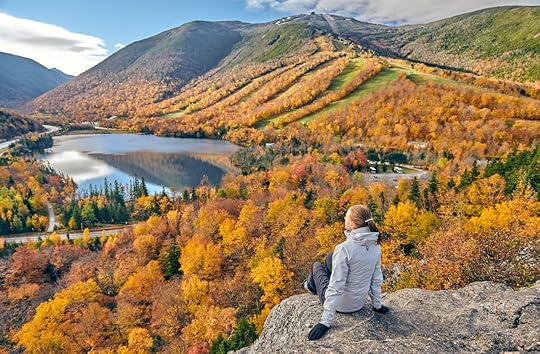
Western states get the buzz for outdoor recreation, but for the upcoming Public Lands Day, we’re calling on those of you east of the Mississippi to prove it doesn’t have to be that way. This holiday — happening on Saturday, September 26 — commemorates our right to roam and should be celebrated with at least a quick hike. You don’t need to be in a national-park-packed state like California or Utah to do that. In fact, any place that is a designated national forest, or is operated by the Bureau of Land Management or National Park Service, is public land. Beyond the big ones, here are seven lesser-known but equally great places to celebrate.
1. Allegheny National Forest — Pennsylvania
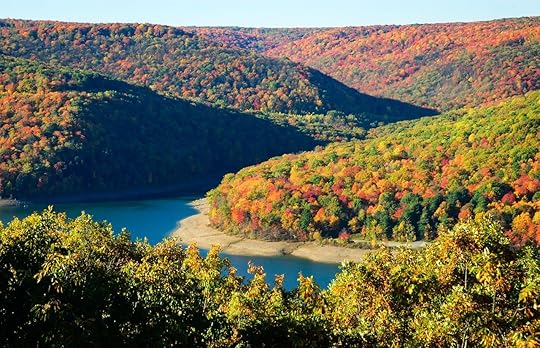
Photo: Zack Frank/Shutterstock
Allegheny National Forest is the most pristine place to solo camp east of the Mississippi. Fall colors are starting to appear, making Public Lands Day the perfect opportunity to get out onto the forest’s more than 200 miles of hiking trails. Catch a short distance of the 96-mile North Country Trail or the much shorter 0.2-mile Rimrock Trail to its overlook for the optimum leaf-peeping opportunity. There’s also the massive Kinzua Sky Walk, which allows you to walk above the forest canopy and gaze for miles out into the Kinzua Gorge. If you’re not up for hiking, drive along the Longhouse National Scenic Byway. You’ll experience the same jaw-dropping setting, so be sure to keep the window rolled down and be ready to pull over frequently to snap photos.
2. Joyce Kilmer-Slickrock Wilderness — Tennessee, North Carolina
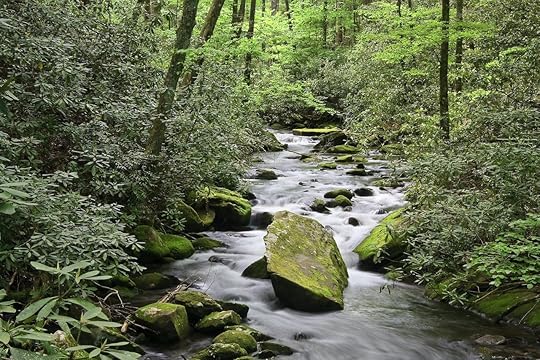
Photo: Jill Lang/Shutterstock
Inside Joyce Kilmer-Slickrock Wilderness it’s very possible to lose track of where you are. The towering national forest land and its extensive trail systems are more reminiscent of western mountain ranges than of most people’s image of the American South. Memorial Loop is an ideal way to experience the surrounding forest without venturing too far off the beaten path. More experienced hikers, or those with more time than it takes to do a quick two-mile loop, can head out on a large system of forest service hiking trails and old logging roads headlined by the 13.3-mile Slickrock Creek Trail, which winds through the forest and over 13 streams and is considered one of the toughest hikes in the United States.
3. Superior National Forest — Minnesota
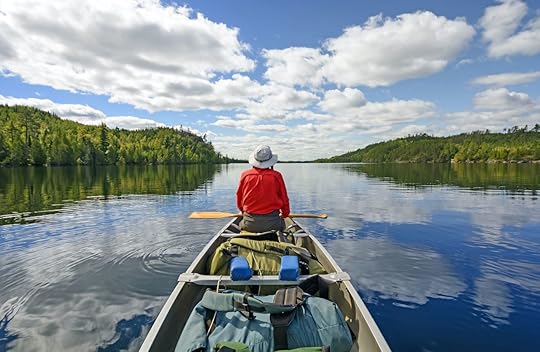
Photo: Wildnerdpix/Shutterstock
A standard fall outing in Minnesota includes some or all of the following: canoeing, hunting, fishing, hiking, and a game of Whist. Superior National Forest is the spot to partake in all of the above — and with gusto. The boreal forest is huge, at 3.9 million acres, so there’s no way you’re going to see everything in one day. A quick morning hike and canoeing the Boundary Waters Canoe Area Wilderness is an experience everyone should have at least once, so make that the primary activity of the day — or the week, if you can stay longer. The nearby Secret/Blackstone Hiking Trail leads you through the boreal forest on an easy path that’s great for families or for a solo escape to celebrate Public Lands Day with a dose of solitude. Camping is in full season here in the fall as well, amplified by some of the most beautiful night skies you’ll see anywhere in the continental US. Just don’t forget your playing cards.
4. Jupiter Inlet Lighthouse Outstanding Natural Area — Florida
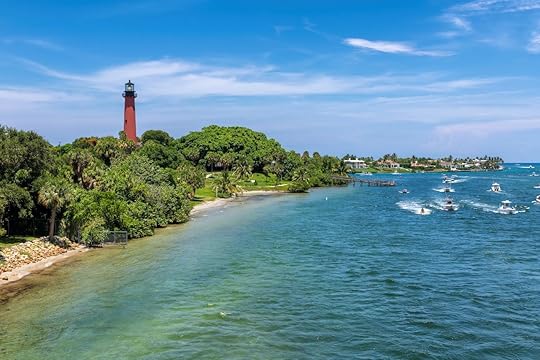
Photo: Lucky-photographer/Shutterstock
For the history lover who doesn’t want to venture far from the south Florida metroplex, Jupiter Inlet Lighthouse Outstanding Natural Area is exactly what its name implies. The 120-acre protected area surrounding the lighthouse itself is your best chance to experience Florida’s vast biodiversity as you meander along the banks of the Loxahatchee and Indian Rivers on a trail through the surrounding mangrove. Gopher tortoise, both little blue and tricolored herons, manatees, and several types of wild pine call the area home, leading it to become the only Outstanding National Area east of the Mississippi River. Daily tours of the lighthouse and museum also take place.
5. Finger Lakes National Forest — New York
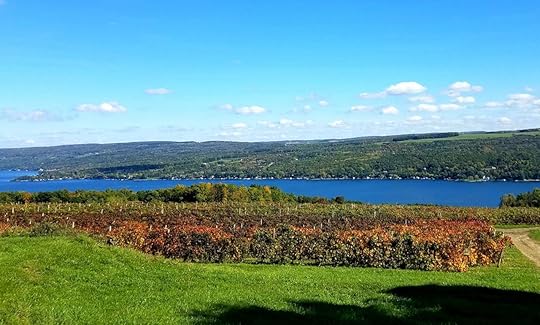
Photo: Anita Warren-Hampson/Shutterstock
There’s much more than wine in New York’s Finger Lakes region. The Finger Lakes National Forest offers 30 miles of maintained hiking trails, and if you’re up for a challenge, Public Lands Day is a great chance to conquer the 12-mile Interloken Trail. Afterward, it’s time for apple or grape picking. If you’re lucky, there might still be some ripe blueberries, which are abundant in the forest. You can camp just about anywhere in the national forest should you wish to stay overnight, though there are three designated campgrounds for those seeking a less-rugged experience. We recommend the Blueberry Patch campground, if only because it continues the theme of your already delicious Public Lands Day excursion.
6. Meadowood Special Recreation Management Area — Virginia
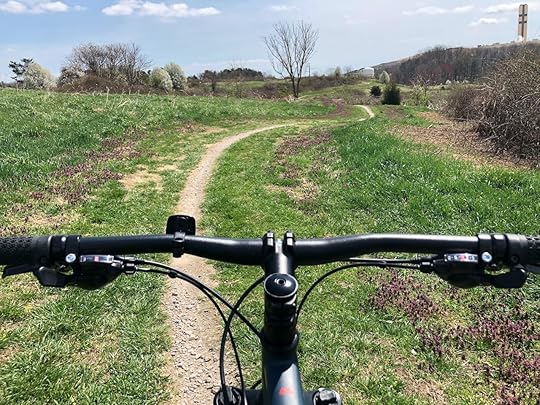
Photo: Leesburg Photos/Shutterstock
Meadowood Special Recreation Management Area is where the mountain biking scenes in Washington, DC, and northern Virginia congregate for epic rides. What better way to ring in the holiday than to slash your way along the seven miles of bike trails maintained to the point that the most challenging trails of the system feature wooden berms and other features to help you catch some air. Unlike national park service sites, Meadowood is free to access 365 days per year, so even if mountain biking isn’t your go-to outdoor activity, there’s no loss in giving it a try along the area’s entry-level South Branch Loop Trail.
7. White Mountain National Forest and Sandwich Range Wilderness — New Hampshire
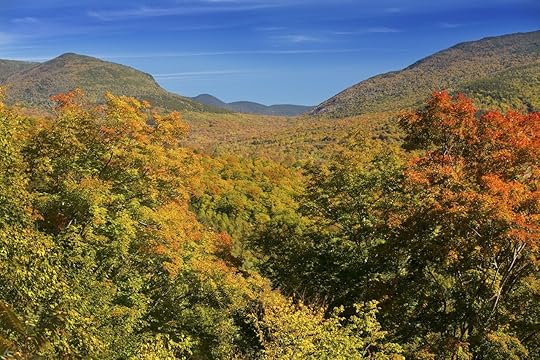
Photo: Jeff Holcombe/Shutterstock
Here within the White River National Forest, you have 15 4,000-foot peaks to choose from for hiking, accessed by the 57 miles of maintained trails within the wilderness area. The Sandwich Range Wilderness is ideal for Public Lands Day because, as it was designated only in 2006, the wilderness itself stands as a testament to the importance of continued land preservation. Hike some or all of the 11.6-mile Mt. Tripyramid Loop Trail for foliage and expansive views from the peak. Many shorter hikes are available as well. Afterward, drive the Kancamagus Scenic Byway for more foliage and views of the surrounding White Mountain peaks. 
More like thisCampingThe ultimate guide to everywhere you can camp permit-free on US public lands
The post 7 beautiful, underrated public lands to visit in the eastern US appeared first on Matador Network.

Matador Network's Blog
- Matador Network's profile
- 6 followers



